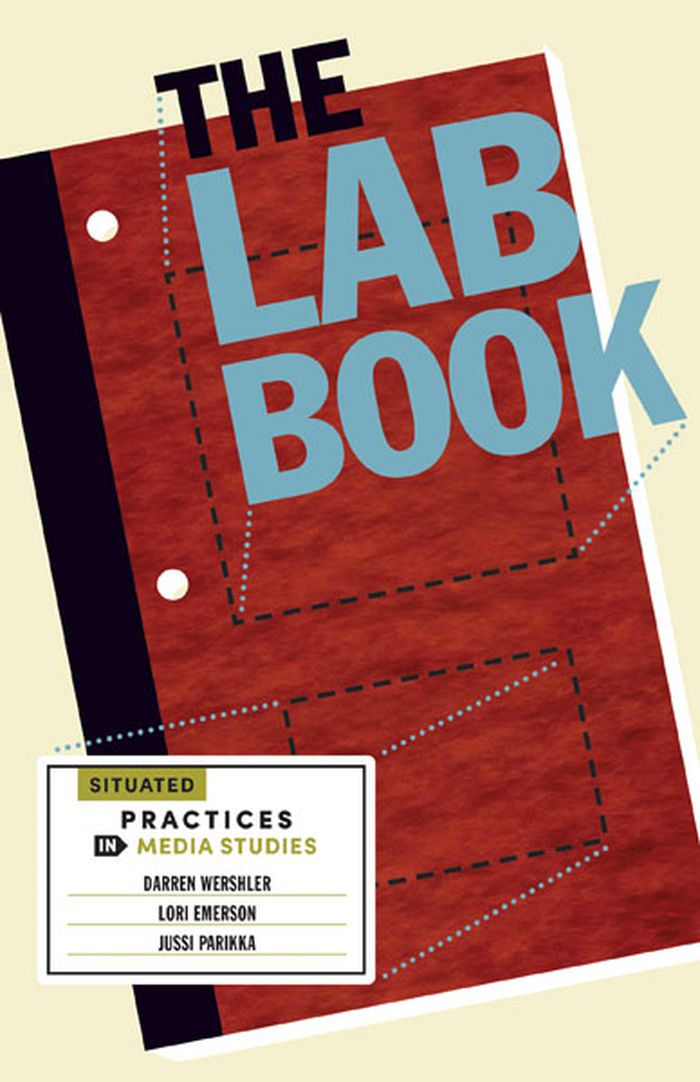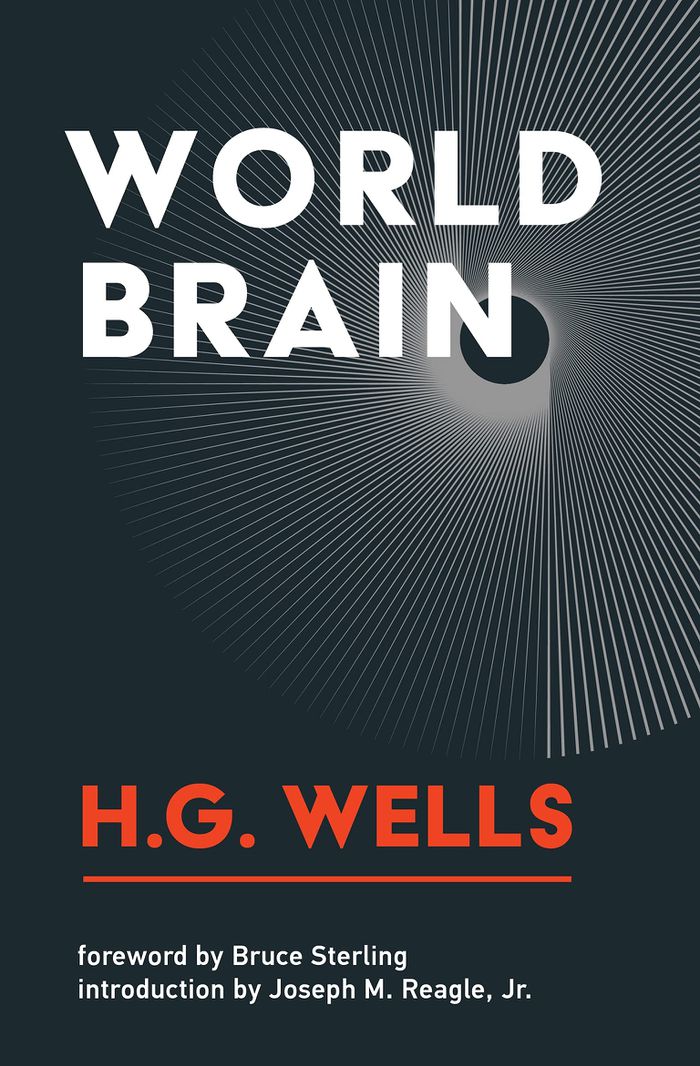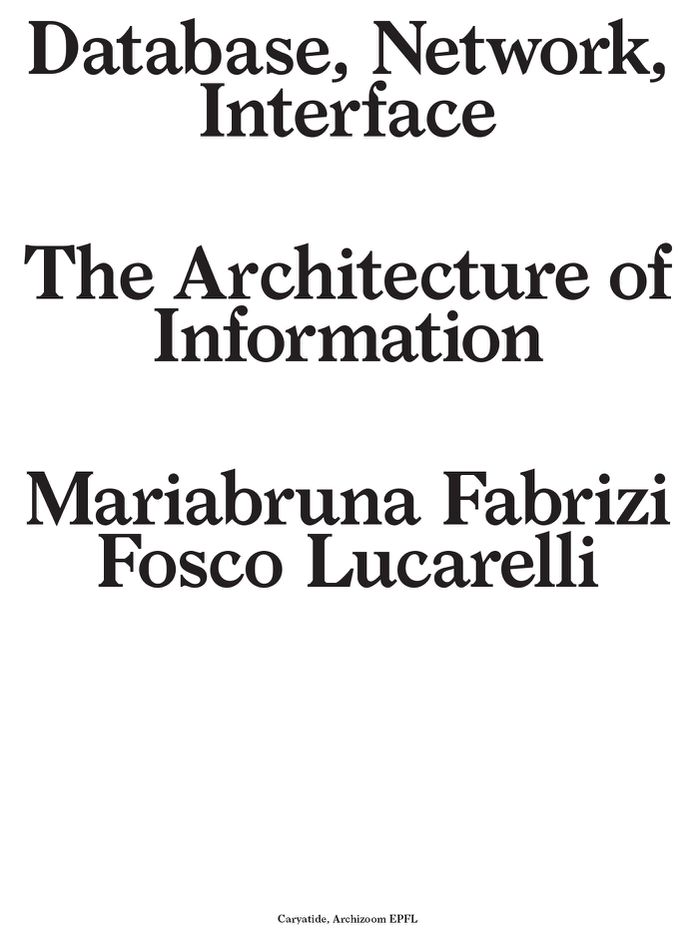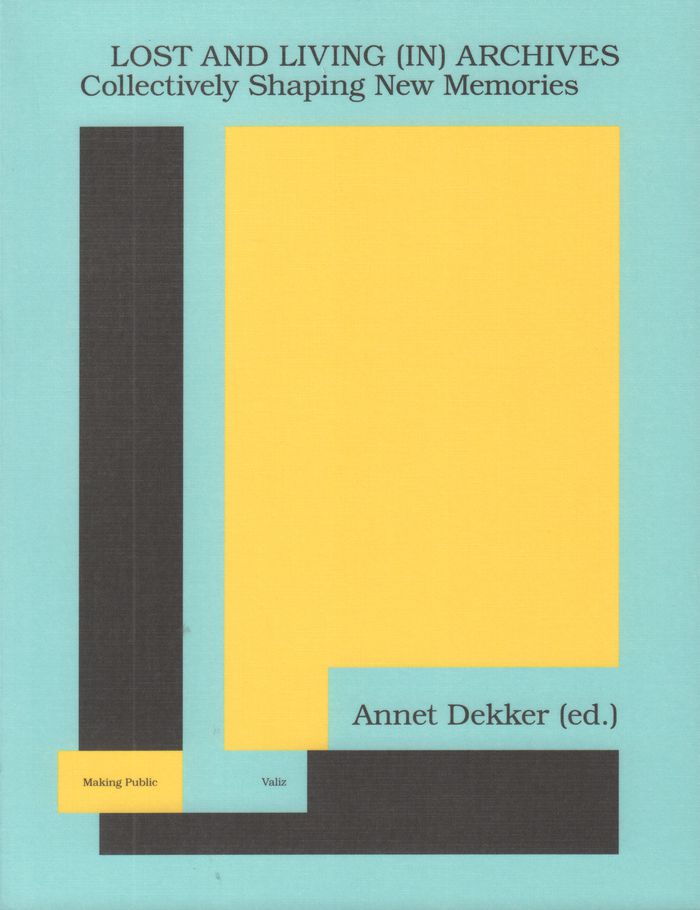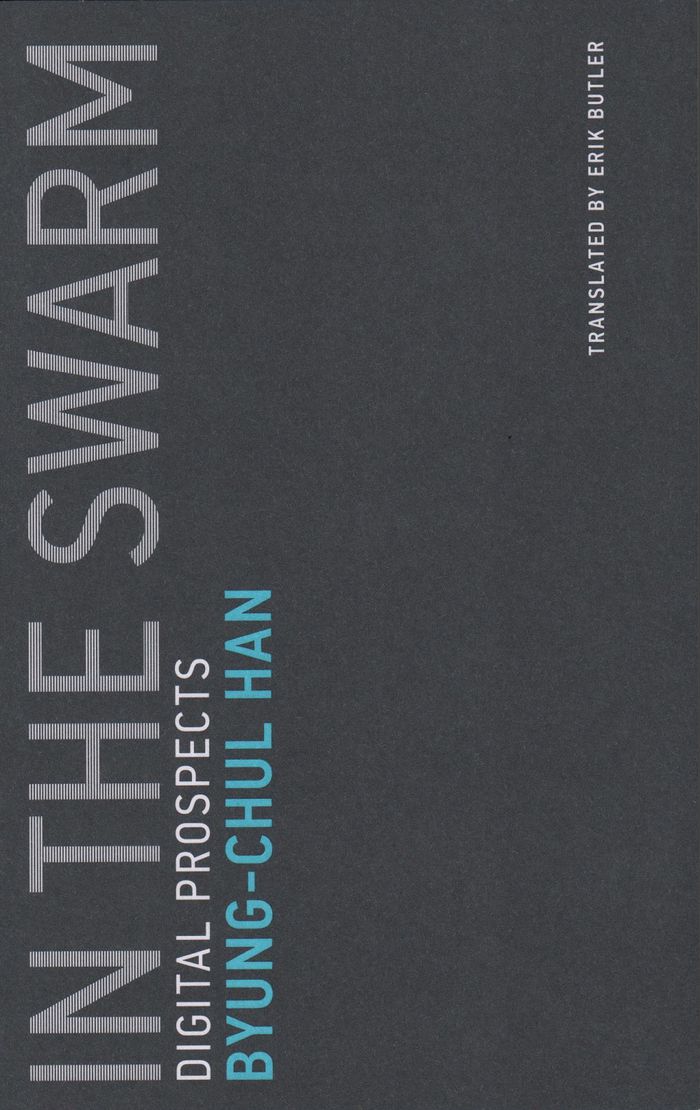$56.95
(available to order)
Summary:
Comment assurer une conservation pérenne et efficace des archives des architectes? Quelles sont les normes et les tendances actuelles? Les réflexions présentées dans cet ouvrage émanent d'architectes, d'archivistes et conservateurs, historiens d'architecture, de chercheurs et d'enseignants. Issus d'une dizaine de pays d'Europe, des États-Unis et du Canada.
Archive, library and the digital
February 2009
Architectures et archives numériques: l'architecture à l'ère numérique: un enjeu de mémoire
Actions:
Price:
$56.95
(available to order)
Summary:
Comment assurer une conservation pérenne et efficace des archives des architectes? Quelles sont les normes et les tendances actuelles? Les réflexions présentées dans cet ouvrage émanent d'architectes, d'archivistes et conservateurs, historiens d'architecture, de chercheurs et d'enseignants. Issus d'une dizaine de pays d'Europe, des États-Unis et du Canada.
Archive, library and the digital
$30.00
(available to order)
Summary:
In the modern era, the archive--official or personal--has become the most significant means by which historical knowledge and memory are collected, stored, and recovered. The archive has thus emerged as a key site of inquiry in such fields as anthropology, critical theory, history, and, especially, recent art. Traces and testimonies of such events as World War II and(...)
November 2006, London / Cambridge
The archive: Documents of contemporary art
Actions:
Price:
$30.00
(available to order)
Summary:
In the modern era, the archive--official or personal--has become the most significant means by which historical knowledge and memory are collected, stored, and recovered. The archive has thus emerged as a key site of inquiry in such fields as anthropology, critical theory, history, and, especially, recent art. Traces and testimonies of such events as World War II and ensuing conflicts, the emergence of the postcolonial era, and the fall of communism have each provoked a reconsideration of the authority given the archive--no longer viewed as a neutral, transparent site of record but as a contested subject and medium in itself. This volume surveys the full diversity of our transformed theoretical and critical notions of the archive--as idea and as physical presence--from Freud's "mystic writing pad" to Derrida's "archive fever"; from Christian Boltanski's first autobiographical explorations of archival material in the 1960s to the practice of artists as various as Susan Hiller, Ilya Kabakov, Thomas Hirshhorn, Renée Green, and The Atlas Group in the present.
$41.99
(available to order)
Summary:
Organized by interpretive categories such as space, infrastructure, and imaginaries, this volume uses historical and contemporary examples of how laboratories are fundamentally connected to changes in the contemporary university. The authors cover topics such as the evolution and delineation of lab-based communities, how labs’ tools and technologies contribute to defining(...)
Archive, library and the digital
December 2021
The lab book: situated practices in media studies
Actions:
Price:
$41.99
(available to order)
Summary:
Organized by interpretive categories such as space, infrastructure, and imaginaries, this volume uses historical and contemporary examples of how laboratories are fundamentally connected to changes in the contemporary university. The authors cover topics such as the evolution and delineation of lab-based communities, how labs’ tools and technologies contribute to defining their space, and a glossary of key hybrid lab techniques.
Archive, library and the digital
World brain
$33.95
(available to order)
Summary:
In a series of talks and essays in 1937, H. G. Wells proselytized for what he called a "World Brain," as manifested in a World Encyclopedia--a repository of scientifically established knowledge--that would spread enlightenment around the world and lead to world peace. Wells, known to readers today as the author of "The War of the Worlds" and other science fiction(...)
World brain
Actions:
Price:
$33.95
(available to order)
Summary:
In a series of talks and essays in 1937, H. G. Wells proselytized for what he called a "World Brain," as manifested in a World Encyclopedia--a repository of scientifically established knowledge--that would spread enlightenment around the world and lead to world peace. Wells, known to readers today as the author of "The War of the Worlds" and other science fiction classics, was imagining something like a predigital Wikipedia. The World Encyclopedia would provide a summary of verified reality (in about forty volumes); it would be widely available, free of copyright, and utilize the latest technology. Of course, as Bruce Sterling points out in the foreword to this edition of Wells's work, the World Brain didn't happen; the internet did. And yet, Wells anticipated aspects of the internet, envisioning the World Brain as a technical system of networked knowledge (in Sterling's words, a "hypothetical super-gadget"). Wells's optimism about the power of information might strike readers today as naïvely utopian, but possibly also inspirational.
Archive, library and the digital
Database network interface
$59.95
(available in store)
Summary:
Throughout human history, the library, the archive and the museum have embodied knowledge, information and collective culture to such an extent that it is possible to compare systems of information organisation with spatial and architectural typologies. The publication, conceived in the occasion of the exhibition at Archizoom (EPFL), dives into the relationship between(...)
Archive, library and the digital
October 2021
Database network interface
Actions:
Price:
$59.95
(available in store)
Summary:
Throughout human history, the library, the archive and the museum have embodied knowledge, information and collective culture to such an extent that it is possible to compare systems of information organisation with spatial and architectural typologies. The publication, conceived in the occasion of the exhibition at Archizoom (EPFL), dives into the relationship between architectural and digital culture beyond the pure rhetoric of the digital turn and the digital as architectural style. The hypothesis is that the notions of "database", "network" and "interface"—common in the field of information technology—could be related to architectural issues of a formal, compositional or symbolic nature, of which spatial arrangements, plans or façades are the expression. In this sense, the publication presents a selection of case studies highlighting the possible links between digital and non-digital cultural projects and their architectural counterparts.
Archive, library and the digital
$28.00
(available to order)
Summary:
When we speak of clouds these days, it is as likely that we mean data clouds or network clouds as cumulus or stratus. In their sharing of the term, both kinds of clouds reveal an essential truth: that the natural world and the technological world are not so distinct. In The Marvelous Clouds, John Durham Peters argues that though we often think of media as environments,(...)
The marvelous clouds: toward a philosophy of elemental media
Actions:
Price:
$28.00
(available to order)
Summary:
When we speak of clouds these days, it is as likely that we mean data clouds or network clouds as cumulus or stratus. In their sharing of the term, both kinds of clouds reveal an essential truth: that the natural world and the technological world are not so distinct. In The Marvelous Clouds, John Durham Peters argues that though we often think of media as environments, the reverse is just as true—environments are media.
Archive, library and the digital
$16.95
(available to order)
Summary:
Vous souffrez d'agoraphobie, de la crise de la quarantaine, d'une jambe cassée ou d'un chagrin d'amour ? Sachez qu’un livre peut avoir l'effet d'un prodigieux médicament, voire vous sauver ! Vous en doutez ? Essayez plutôt... Vous trouverez ici les meilleurs romans adaptés à votre cas. Garantis sans effets secondaires, ils vous permettront de traiter les pathologies(...)
November 2016
Remèdes littéraires : se soigner par les livres
Actions:
Price:
$16.95
(available to order)
Summary:
Vous souffrez d'agoraphobie, de la crise de la quarantaine, d'une jambe cassée ou d'un chagrin d'amour ? Sachez qu’un livre peut avoir l'effet d'un prodigieux médicament, voire vous sauver ! Vous en doutez ? Essayez plutôt... Vous trouverez ici les meilleurs romans adaptés à votre cas. Garantis sans effets secondaires, ils vous permettront de traiter les pathologies telles que : abandon, alcoolisme, calvitie, rage de dents, mal de dos, harcèlement, hémorroïdes, insomnie, jalousie, ménopause, obésité, rhume des foins, solitude… et bien d'autres !
Espaces de savoir
$25.00
(available in store)
Summary:
Dans le paradigme de complexité qui est le nôtre, les contextes institutionnels dans lesquels s'exerce le savoir doivent dorénavant ouvrir sur un environnement général qui le réclame, dans l'idée d'un continuum devenu nécessaire entre les situations humaines et le savoir. C'est à cette problématique contemporaine que le présent ouvrage réfléchit. Il résulte de trois(...)
Espaces de savoir
Actions:
Price:
$25.00
(available in store)
Summary:
Dans le paradigme de complexité qui est le nôtre, les contextes institutionnels dans lesquels s'exerce le savoir doivent dorénavant ouvrir sur un environnement général qui le réclame, dans l'idée d'un continuum devenu nécessaire entre les situations humaines et le savoir. C'est à cette problématique contemporaine que le présent ouvrage réfléchit. Il résulte de trois années de travail dans le cadre d'un projet réunissant cinq contributeurs de quatre universités québécoises ainsi qu'une artiste du milieu littéraire. L'équipe s'est intéressée à faire émerger et à développer des stratégies de spatialisation permettant d'accéder de manière inédite à des environnements de savoir ainsi qu'à générer et à organiser de manière singulière de tels environnements. Il s'agit ici d'ouvrir un champ de recherche artistique sur la question de la spatialisation du savoir, dans le cadre des mises en situation individuelles et créatives dont l'efficacité et la validité répondent ainsi à des impératifs très différents de ceux commandés par des critères de multitude et d'universalité.
$34.50
(available to order)
Summary:
Archives are collections of records that are preserved for historical, cultural and evidentiary purposes. As such, archives are considered as sites of a past, places that contain traces of a collective memory of a nation, a people or a group. Digital archives have changed from stable entities into flexible systems, at times referred to with the term ‘Living Archives’. In(...)
Lost and living (in) archives collectively shaping new memories
Actions:
Price:
$34.50
(available to order)
Summary:
Archives are collections of records that are preserved for historical, cultural and evidentiary purposes. As such, archives are considered as sites of a past, places that contain traces of a collective memory of a nation, a people or a group. Digital archives have changed from stable entities into flexible systems, at times referred to with the term ‘Living Archives’. In which ways has this change affected our relationship to the past? Will the erased, forgotten and neglected be redeemed, and new memories be allowed? Will the fictional versus factual mode of archiving offer the democracy that the public domain implies, or is it another way for public instruments of power to operate? Lost and Living (in) Archives shows that archives are not simply a recording, a reflection, or an image of an event, but that THEY shape the event itself and thus influence the past, present and future.
Archive, library and the digital
In the swarm
$18.95
(available to order)
Summary:
Digital communication and social media have taken over our lives. In this contrarian reflection on digitized life, Byung-Chul Han counters the cheerleaders for Twitter revolutions and Facebook activism by arguing that digital communication is in fact responsible for the disintegration of community and public space and is slowly eroding any possibility for real political(...)
In the swarm
Actions:
Price:
$18.95
(available to order)
Summary:
Digital communication and social media have taken over our lives. In this contrarian reflection on digitized life, Byung-Chul Han counters the cheerleaders for Twitter revolutions and Facebook activism by arguing that digital communication is in fact responsible for the disintegration of community and public space and is slowly eroding any possibility for real political action and meaningful political discourse. In the predigital, analog era, by the time an angry letter to the editor had been composed, mailed, and received, the immediate agitation had passed. Today, digital communication enables instantaneous, impulsive reaction, meant to express and stir up outrage on the spot. “The shitstorm,” writes Han, ”represents an authentic phenomenon of digital communication.” Meanwhile, the public, the senders and receivers of these communications have become a digital swarm—not a mass, or a crowd, or Negri and Hardt’s antiquated notion of a “multitude,” but a set of isolated individuals incapable of forming a “we,” incapable of calling dominant power relations into question, incapable of formulating a future because of an obsession with the present. The digital swarm is a fragmented entity that can focus on individual persons only in order to make them an object of scandal. Han, one of the most widely read philosophers in Europe today, describes a society in which information has overrun thought, in which the same algorithms are employed by Facebook, the stock market, and the intelligence services. Democracy is under threat because digital communication has made freedom and control indistinguishable. Big Brother has been succeeded by Big Data.
Archive, library and the digital


